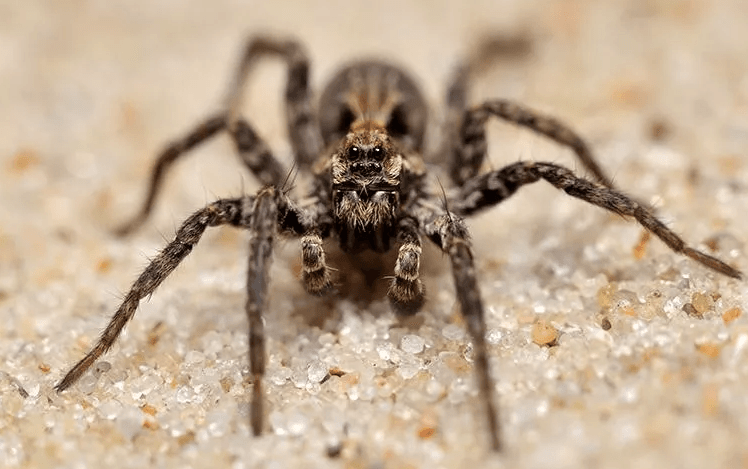What Do Wolf Spiders Look Like?
Wolf spiders are among the hairiest of spider species, which gives them a very creepy appearance to anyone who has even the slightest fear of spiders. They are fairly large and can grow up to 35 mm in length. They are black, gray, and brown in color with unique patterns on their bodies. They share many visual similarities with tarantulas, causing many people to mistake a wolf spider in their home as a tarantula. Wolf spiders have shorter legs than spiders that build webs. Female wolf spiders carry their young on their backs before they are large enough to move out on their own, so you may one day spot a spider with baby spiders on her back. Eliminate this spider from your home as soon as possible or you will soon have a whole family of spiders in your house.

Where Do Wolf Spiders Live And Hide?
You may find wolf spiders hiding in suburban gardens. They don’t spin spider webs and instead live in burrows underground. When the weather gets cold, they will look for warmer habitats and may find their way into your home. When inside, they might gravitate to window sills, basements, houseplants, and garages.
What Do Wolf Spiders Eat?
Wolf spiders move very quickly, making it possible for them to catch and pounce on their prey. Wolf spiders eat insects such as ants, earwigs, crickets, flies, and grasshoppers. Sometimes they eat other spiders, and have even been observed eating lizards, mice, frogs, and tiny birds.
Are Wolf Spiders Dangerous?
Wolf spiders have venom that is injected when they bite. While these spiders do not actively seek out humans to bite, if provoked or threatened, they will bite. If you are bitten by a wolf spider, you should seek out medical attention as soon as possible. Wolf spider bites will become swollen and inflamed. You may feel sick to your stomach, experience dizziness, rapid pulse, and necrosis. The side effects of these bites can last up to ten days! Want more information on wolf spiders? Here is a guide to wolf spiders for East Texas residents.